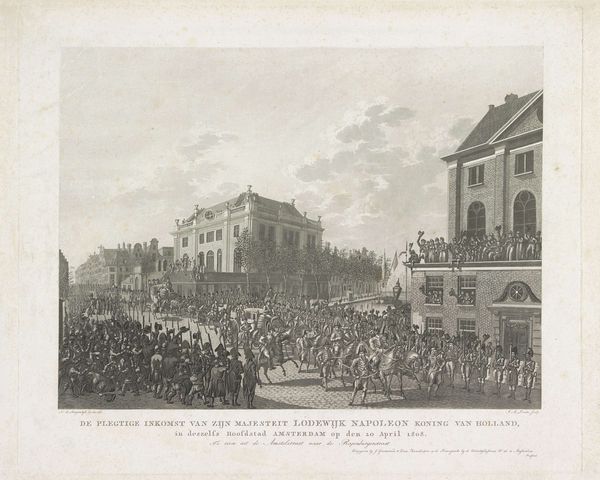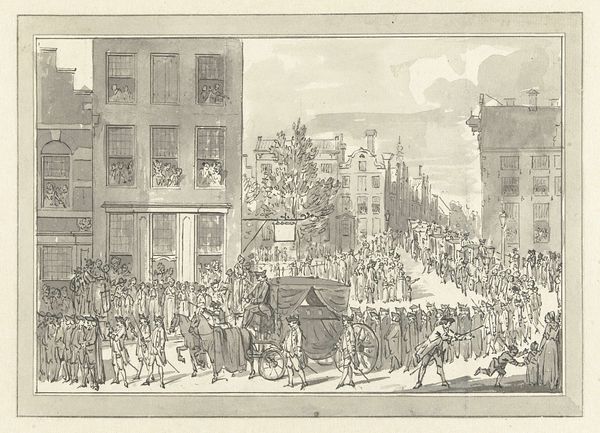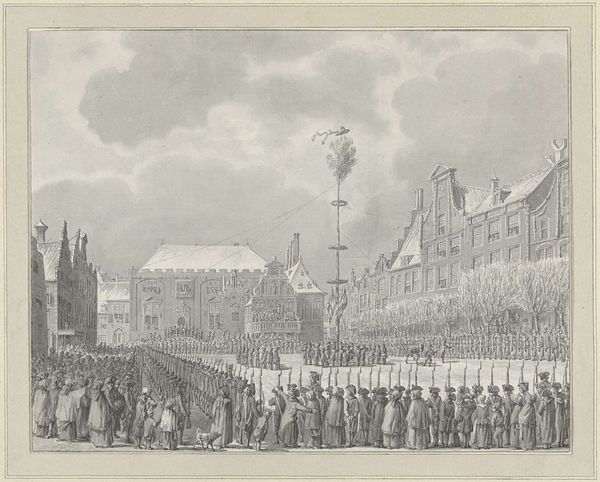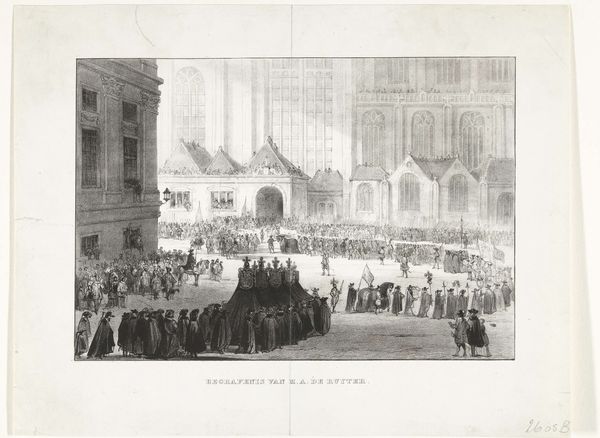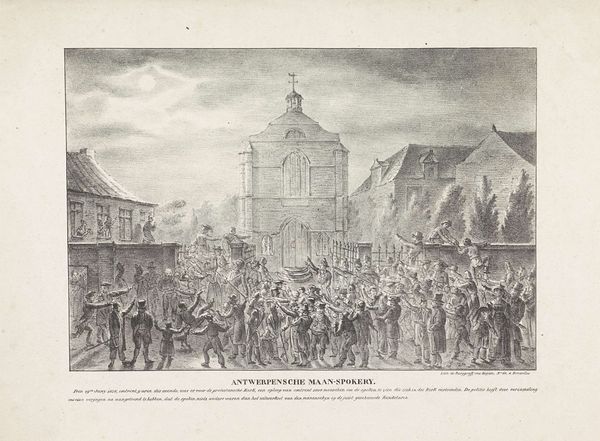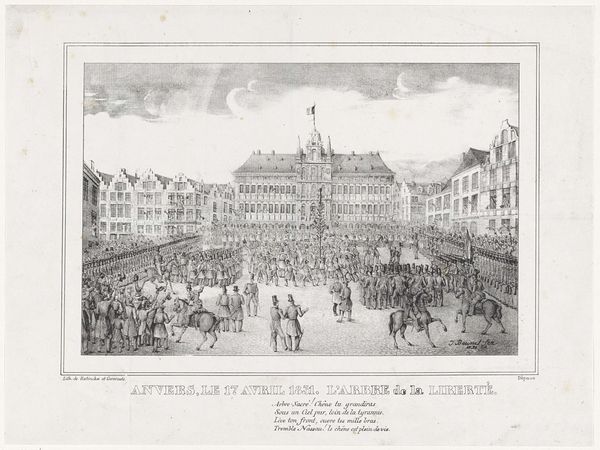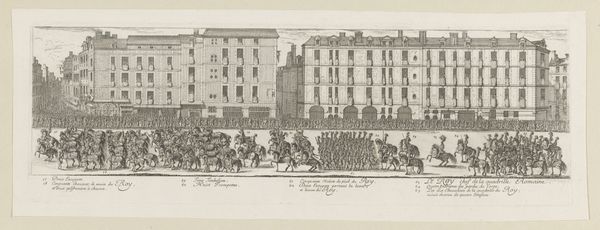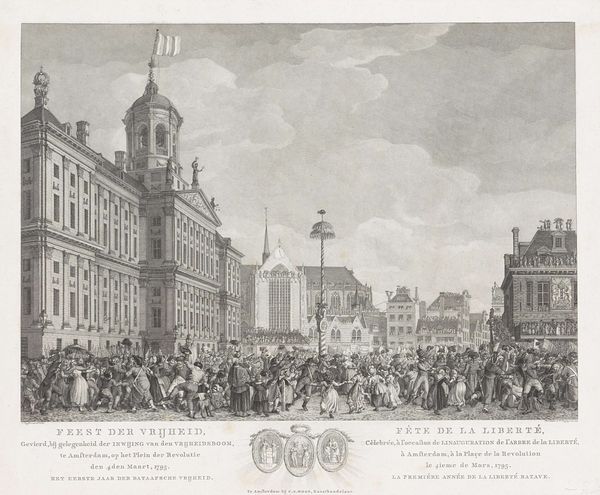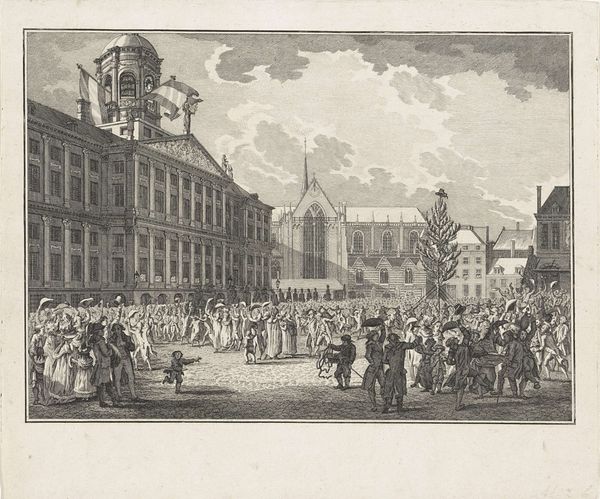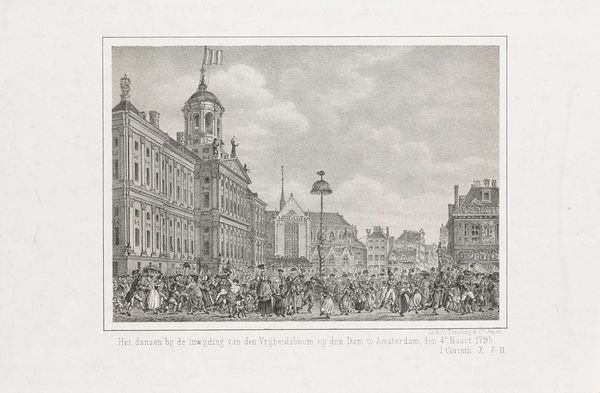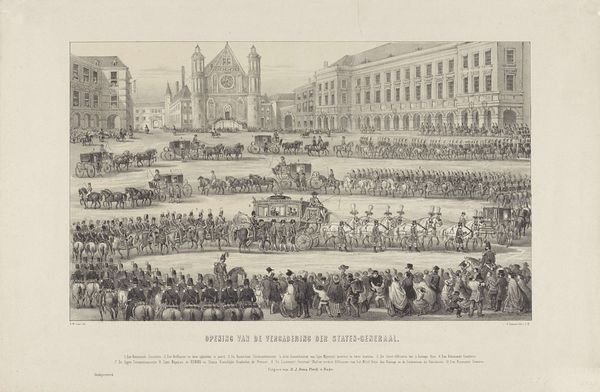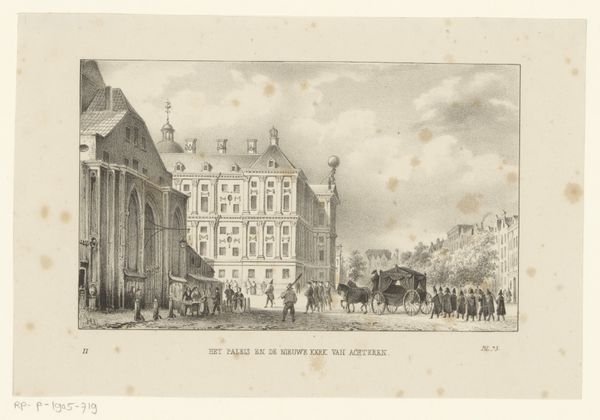
De Gecostumeerde Optocht op de Groote Markt te Schiedam. (1 April 1872.) 1872
0:00
0:00
print, engraving
#
16_19th-century
#
dutch-golden-age
# print
#
pencil sketch
#
old engraving style
#
cityscape
#
genre-painting
#
engraving
#
realism
Dimensions: height 233 mm, width 420 mm
Copyright: Rijks Museum: Open Domain
Carel Christiaan Antony Last captured this scene of Schiedam’s Groote Markt on April 1, 1872, with ink on paper. The festive scene, dominated by a sea of faces and the recurrence of the Dutch flag, prompts us to consider the symbolic power of collective gatherings. Flags, banners, and emblems have long served as visual shorthands for allegiance, embodying a community's shared values and identity. From ancient Roman standards to medieval heraldry, the symbolic deployment of flags serves as a potent means of forging unity. But note how this symbol mutates. Consider the swastika, for instance. Before its appropriation by the Third Reich, it was a religious symbol across the world. This demonstrates the psychological weight that symbols carry and the ease with which they can be inverted to represent opposing ideological positions. These public displays of collective identity are deeply embedded in the collective memory and tap into our subconscious desire for belonging and recognition. In this print, the proliferation of national colours evokes the primal human need for unity, igniting intense emotional states of patriotism and solidarity. These feelings transcend time, reappearing in various forms throughout history.
Comments
No comments
Be the first to comment and join the conversation on the ultimate creative platform.
